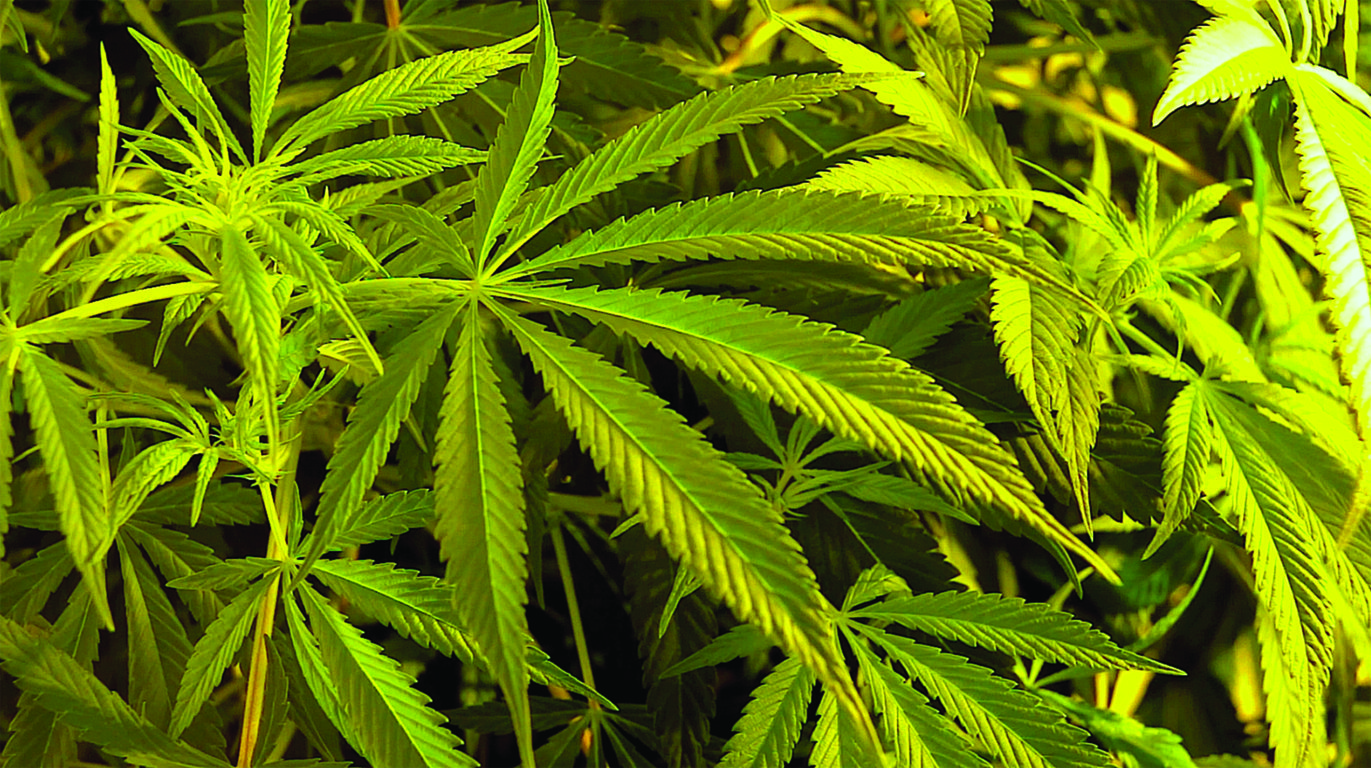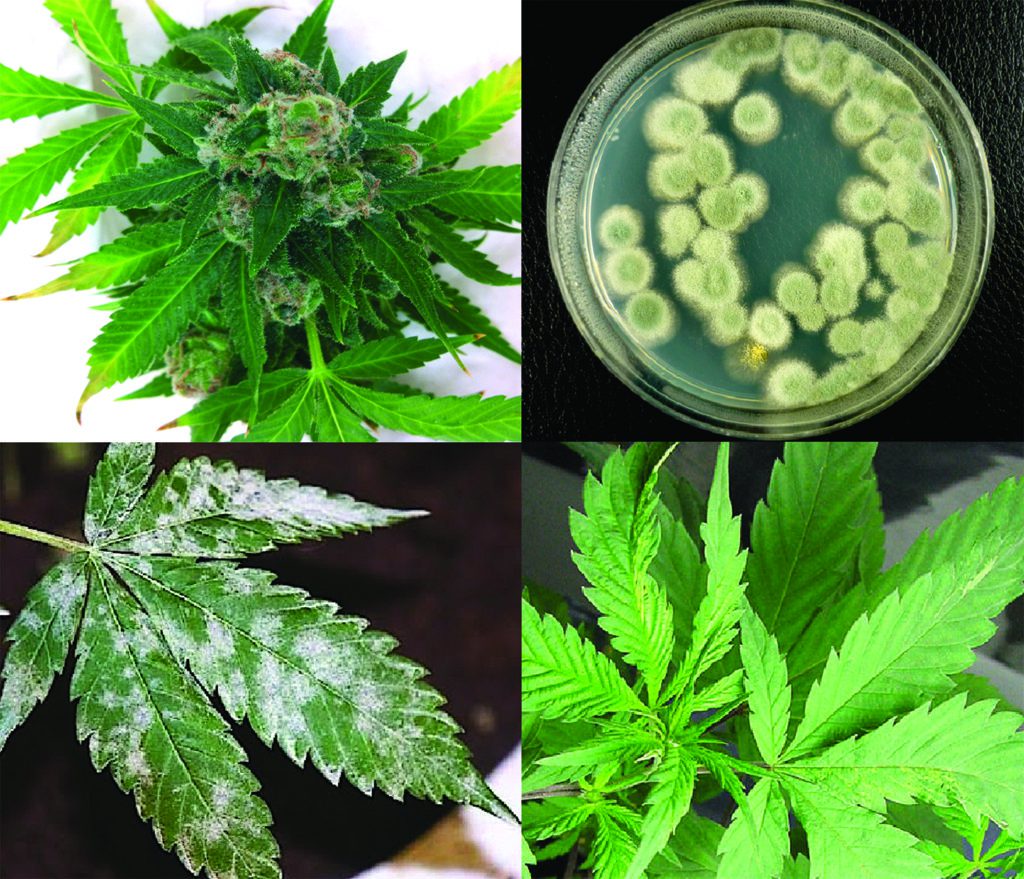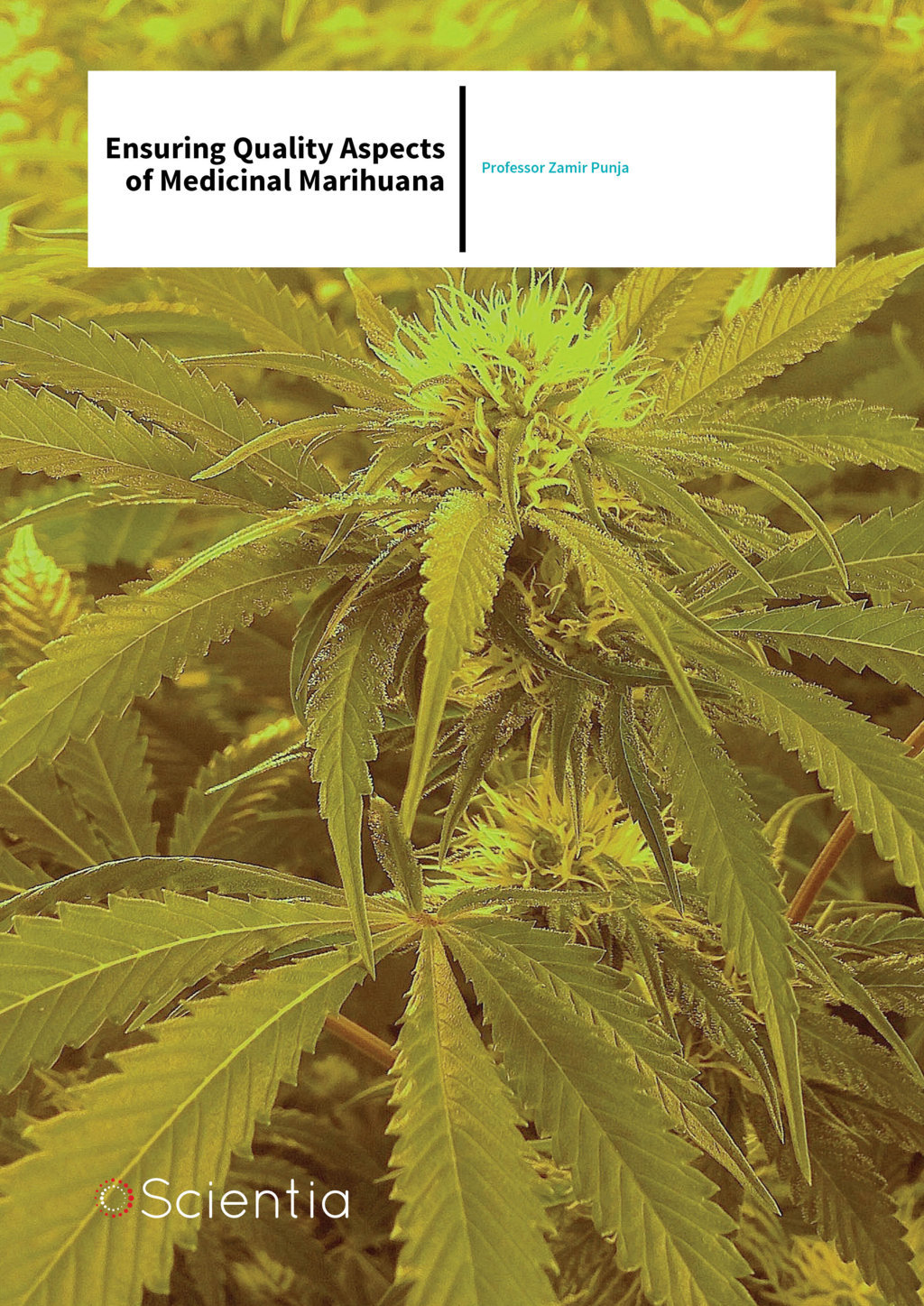Professor Zamir Punja – Ensuring Quality Aspects of Medicinal Marihuana
Professor Zamir Punja, an expert in plant pathogens, tissue culture and molecular biology at Simon Fraser University, turns his attention toward the under-studied, but medically important field of cannabis research.
Humans have consumed and cultivated cannabis (or marihuana) since the beginning of recorded history, with evidence for this dating back to as far as 7000 BC. In most countries, the consumption of marihuana has been prohibited for around 100 years, but relatively recently there has been renewed scientific interest in its medicinal properties for the treatment of various health conditions. One of the scientists at the forefront of this research is Dr Zamir Punja, a professor of plant biotechnology at Simon Fraser University in British Columbia, Canada. Over the course of his scientific career, Professor Punja has worked on various aspects of ensuring high-quality production of agricultural plants, such as blueberry, cucumber, tomato and ginseng, and studying the diseases which affect them. He has published over 250 papers and book chapters on this topic. His focus is now squarely on cannabis, as he believes that ‘ensuring consistency and high quality of product will be essential to ensure the utility of cannabis for medical purposes.’
The Medicinal Properties of Cannabis
In some ways, marihuana is more complex than most drugs, because its effects do not result from any single compound produced by the plant. Over 100 cannabinoids – compounds which interact with a specific set of endocannabinoid receptors within our bodies – have been identified so far. These compounds can have distinct pharmacological properties. THC (delta-9 tetrahydrocannabinol) is the often the most prevalent of these molecules and is the principal cause of the plant’s psychoactive effects, by interacting with receptors found in, among other places, the nervous system and brain. In contrast, the second most prevalent cannabinoid, CDB (cannabidiol) possesses a range of pharmacological activity, but is not psychoactive, in that it does not affect the brain directly. In addition, cannabis plants produce a complex group of compounds called terpenoids, which impart volatile scents and flavours similar to those found in a range of other plants including pine trees, lemon fruit and basil.

‘The ultimate goal is to ensure high-quality and consistent production of marihuana for medical purposes using modern research methods’
The quantity of these phytochemicals and their ratio relative to each other will induce different effects when the plant is consumed. Cannabinoid receptors, such as CB1 and CB2, have evolved to interact with endocannabinoids – cannabinoids produced by the body itself. The interactions between cannabinoids and these receptors are responsible for the pain-relieving, antiinflammatory, anti-spasmodic, anti-emetic and psychoactive effects of cannabis. These properties make cannabinoids a promising and thus-far under-studied avenue for the treatment of diseases such as auto-immune disorders, multiple sclerosis, inflammatory bowel disease and post-traumatic stress disorder, to name a few. The quantity of these chemicals and their relative proportions are influenced by various factors, such as the plant’s growth conditions, harvest practices, post-harvest handling techniques and storage conditions. One of the most influential variables though, is the genetic background of the plant.
The Genetics of Cannabis
Like humans, cannabis exists either as male or female individuals, determined by the presence of either a pair of X chromosomes (female) or one X and one Y chromosome (male). Interestingly, under stressful conditions, plants can become hermaphroditic, meaning an individual plant which is genetically female (XX) for example, could still produce both male and female flowers. Exactly how the plant does this is not fully understood. Cannabinoids are produced within glandular trichomes which are most abundant in unfertilised, female flower buds (inflorescences). Therefore, male plants are undesirable for harvesting as marihuana, as they contain negligible levels of THC and CBD, and their presence is highly detrimental to development of female flowers, which will produce only small quantities of these chemicals once pollinated. Further research into this area will hopefully improve our knowledge of what causes genetically female plants to produce male flowers, and therefore facilitate more efficient marihuana production.

A huge number of cannabis strains exist, resulting from genetic crosses originally made between indica and sativa varieties, and subsequent crosses made between hybrids. These contain varying proportions of sativa and indica genes, and possess a range of pharmacological properties (as cannabis) or industrial usefulness (as hemp fibre). The names of these strains can offer clues to either geographical origin or source genetics. ‘Kush’ strains, for example, have ancestry from varieties collected from the Afghanistan/ Pakistan region. Strains are often named after the parental strains used to produce them, so crossing ‘Blueberry’ with ‘White Widow’ for example, has produced a strain named ‘Berry White’.
Many of these strains have been produced either by seed companies or by ‘covert breeders’, without much communication between them, oversight or agreed-upon system of nomenclature, leading to a great deal of uncertainty regarding the identity of particular strains. The Punja laboratory therefore is applying DNA fingerprinting techniques to a large number of strains, to help to clear up some of the uncertainty regarding genetic backgrounds. ‘We want to apply methods in DNA fingerprinting to characterise those genetic strains that are widely used commercially to develop a unique way to identify them,’ says Professor Punja. These techniques are very much like those used to forensically identify a suspect in a criminal case, by detecting differences in the DNA sequence at a large number of locations. When analysed together, these differences provide characteristic ‘fingerprints’ for individual strains. Some of the strains the team has tested are genetically identical, despite have different names, while others have displayed genetic distinctions between plants of the same strain. As breeders work towards producing better cannabis strains for medicinal purposes, hemp, or recreational use, having a reliable starting point of knowing genetically which strain is being utilised, is essential.
Growth Conditions and Flowering
Control over the timing of flowering is crucial for cannabis growers, as flower buds are the major site of cannabinoid production. While it is well understood that photoperiod (the proportion of the day spent in light and darkness) greatly influence the timing of flowering, what is not well understood is the mechanism behind ‘automatic’ varieties – plants that flower after a certain period of time regardless of light cycle conditions. Studies are underway to investigate how these plants achieve this, in addition to research into the use of lighting in general for cannabis growth, and effects of soil composition, atmospheric carbon dioxide and a multitude of other variables. One of the approaches to enhance the growth and quality of medicinal marihuana plants is growing them in hydroponic systems – where plants grow in a nutrient rich solution, instead of soil. Hydroponic systems not only produce plants with enhanced growth and yield, but potentially can also give more consistent and repeatable results compared to other production environments.
Distinguishing Male and Female Cannabis Plants
When starting marihuana plants from seeds that are produced following fertilisation of female flowers with pollen, approximately half of them will be female with the remaining being male. Distinguishing between the sexes of these plants is currently only possible at the stage of flower formation, approximately 6–8 weeks following seed germination. This presents a problem with identifying male plants early enough to remove them from a production facility before pollen production ensues. Working jointly with Agrima Botanicals, Professor Punja’s lab developed procedures for a test kit that can be used to identify the gender of individual plants, allowing producers to rogue out or destroy male plants early in growth. This kit, called the GreenScreen Plant Sex ID Kit, is based on extracting DNA from seedling leaf tissue that is then used to specifically identify regions of the chromosomes unique to male and female plants. This allows rapid (24 hr) sexing of plants.

Tissue Culture of Cannabis
One interesting property of plants is that all of their cells have the potential to become stem cells, and give rise to all the different tissues of a plant. Large numbers of tissue samples can be taken from an individual plant and grown on a culture medium. In theory, a complete plant could be obtained from a living cell taken from anywhere on an existing plant – something which is not possible for animals. In practice, this procedure is not simple, and varies in difficulty from species to species. Initially, cell growth occurs as disorganised masses of cells called calluses, but under precisely controlled conditions, supplemented with specific nutrients and growth hormones, they can develop into roots and shoots. This process, known as organogenesis, allows the production of a large number of plants, which will be genetic clones, from a single individual without having to produce seeds. Propagation of marihuana plants can also be carried out using vegetative cuttings and root-inducing hormones, and this is the preferred method for large-scale commercial production. Not all strains respond in the same manner, however. An alternative process is micropropagation using tissue culture which has not been entirely perfected yet, and remains an active area of research. Professor Punja feels that since large-scale vegetative cuttings can be a potential route for the spread of pathogens, tissue culture and micropropagation may be alternatively used to reduce the introduction of diseases in marihuana growing facilities. Tissue culture micropropagation is routinely used in the horticulture industry for orchids, strawberry, blueberry, and many other crops.
Creating GM Cannabis
One useful technique in the study of plant genetic modification involves a pathogenic bacterium called Agrobacterium, which is responsible for crown gall disease in plants. Agrobacterium has the interesting capability to insert part of its own DNA into the genome of the plant, inducing tumour-like growths, or galls, on the plant tissue. Scientists realised soon after the discovery of this mechanism that the genes responsible for tumour formation could be disarmed and replaced with DNA from a different organism, providing an extremely useful system for genetic studies and engineering of plants.
In cannabis, genetic engineering is still in it’s infancy. Research into this area has been hampered by legal restrictions on handling of plant material. Professor Punja’s lab previously demonstrated that in hemp, a combination of the techniques of plant tissue culture and Agrobacterium-mediated genetic transformation can be used to produce genetically-transformed calluses, the first step in producing fully transformed plants of this species. Professor Punja’s work has also focussed on applying transgenic techniques (introducing genes from other organisms) to carrot and ginseng, to enhance their resistance to disease. One such experiment involved inserting a gene from petunia into carrot, which produced an enzyme called chitinase. This enzyme breaks down a component of the fungal cell wall, chitin, and its presence in carrot was found to increase its resistance to fungal pathogens. The creation of GM cannabis could lead to improvement in the genetic traits but regulatory approval is likely to be difficult.
Diseases of Cannabis
Despite a large volume of scientific literature on pathogens affecting hemp, information on diseases that afflict marihuana specifically is much rarer. As the industry expands and marihuana is cultivated in larger areas, the consequences of this lack of knowledge will become increasingly severe. Previously unreported diseases are now appearing, caused by bacteria, fungi and viruses.
Certain fungal pathogens are known to cause root rot or bud rot, and are known to spread rapidly if introduced into an environmentally controlled indoor production facility. Research will need to be conducted into how these pathogens get inside cannabis growth facilities and how best to manage them when they do. Having worked on the subject of plant diseases in other species, such as wasabi, cucumber and ginseng, Professor Punja has demonstrated how environmental conditions can be controlled to influence the way pathogens interact with host plants. He has also studied the use of mycoviruses (viruses which infect fungi) as a control against fungal pathogens, in addition to using bacterial and fungal species as biocontrol agents. ‘Our research will target some of the major fungal diseases affecting plant production and develop rapid screening methods for the pathogens and develop disease management tools,’ he tells us.
The lab’s continued work on cannabis pathogens, as well as research on transformation, tissue culture and optimisation of growth conditions, will no doubt be invaluable to producers as they find their way in this rapidly expanding industry.
Meet the researcher

Professor Zamir Punja
Department of Biological Sciences
Simon Fraser University
Burnaby
Canada
Professor Zamir Punja developed his interest in plants at a young age, studying plant biology for his BSc at the University of British Columbia and later focussing on plant pathology for his MSc and PhD at the University of California Davis. During his studies, he gravitated towards studying fungal pathogens that cause diseases in food crops, plant tissue culture and plant molecular biology. After four years of private sector research and development in plant biotechnology at the Campbell Soup Company, he returned to academia at Simon Fraser University, where he now holds a position as Professor of Plant Pathology and Biotechnology.
CONTACT
E: punja@sfu.ca
T: (+1) 778 782 4471
W: http://www.sfu.ca/biology/faculty/punja/
KEY COLLABORATORS
Agrima Botanicals, Maple Ridge, BC
FUNDING
Natural Sciences and Engineering Research Council of Canada, Engage and CRD grants
Agrima Botanicals
REFERENCES
ZK Punja, R Rodriguez and S Chen, Assessing genetic diversity in Cannabis sativa using molecular markers, In: Cannabis sativa L. – Botany and Biotechnology, Edited by Suman Chandra, Hemant Lata and Mahmoud A ElSohly, Springer-Verlag Berlin Heidelberg, 2017 (in press).
M Feeney and ZK Punja, The role of Agrobacterium-mediated and other gene-transfer technologies in cannabis research and product development, In: Cannabis sativa L. – Botany and Biotechnology, Edited by Suman Chandra, Hemant Lata and Mahmoud A ElSohly, Springer-Verlag Berlin Heidelberg, 2017 (in press).
M Feeney and ZK Punja, Transformation of hemp (Cannabis sativa L.), In: Wang, K. (ed.) Methods in Molecular Biology, Second edition, Agrobacterium protocols, 2014, 344, 319–329.
G Rodriguez, A Kibler, P Campbell, ZK Punja, Fungal diseases of Cannabis sativa in British Columbia, Canada, Agrima Botanicals, Maple Ridge, BC, Canada; Simon Fraser Univ, Burnaby, BC, Canada. Phytopthology abstract annual meeting 2015.


